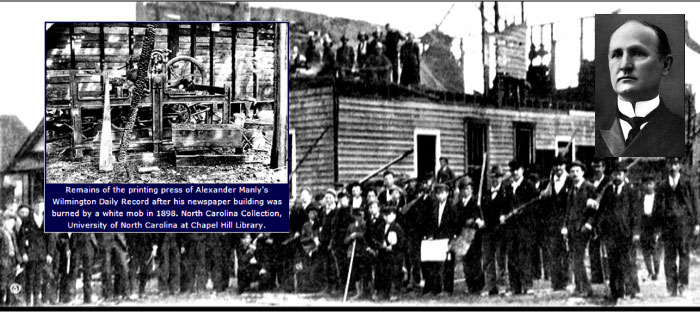The Shepp Report
Special Edition
What? Another Day That Will Live In Infamy?
May 18, 2020
How soon we forget the men and women of America who defended this island from attack in 1941, Socialists of the Democrat Party now taking it back in 2020? - Webmaster
Photo Source: DailyWire
How does a tourist get to this island from New York City, walk? The airline didn't check him? Plus an American citizen cannot sign away guaranteed First Amendment rights to make a deal with Democrat lawmakers. - Webmaster
From the DailyWire
"Hawaii now requires tourists to list their contact and lodging information, and all visitors must sign an agreement that they will spend the next 14 days in self-quarantine.
'By signing the legal document [that takes away their freedom], they acknowledge they understand violating the order is a criminal offense and they are subject to a $5,000 fine and/or a year imprisonment,' according to the state’s department of transportation.
The state’s mandatory quarantine runs through the end of June, [Democrat] Gov. David Ige said this week. Hawaii Attorney General Clare Connors [supporter of Ruth Bader Ginsburg] said,
'We appreciate the assistance of local people who spot flagrant violations of our emergency rules on various social media sites and report them to the appropriate authorities.'
Tourism to the island paradise has been severely affected by the virus. On Thursday, 252 visitors and 318 residents arrived, according to the Hawaii Tourism Authority. During the same period last year, nearly 30,000 passengers arrived." - DailyWire
Below Is Yet Another Reminder . . .
. . . of the loss of freedom by the Democrat Party, in this case their goons standing around a trophy of a burned down black-own newspaper in Wilmington, NC, during the Wilmington Massacre of 1898.
How did so many Americans forget this atrocity 122 years ago? Did they get too lazy, no longer protecting the Republic won by spirit-filled new Americans in 1776, as 'deplorable' truck drivers in 2020 deliver food and medicine to cities and towns across this nation day after day during a shutdown?
Are too many Americans living off of borrowed government handouts while they rely on a corrupted fake media to make decisions about their freedoms . . . an Obama, (in five days we are going to fundamentally transform the United States Of America), fake media?
The Wilmington Race Riot Of 1898
By LeRae Umfleet, NC Office of Archives and History, 2010, NCPedia
"Because their campaign was so successful, Democrats won the election in Wilmington and across the state. The next day a group of Wilmington whites passed a series of resolutions requiring Alex Manly to leave the city and close his paper, and calling for the resignations of the mayor and chief of police. A committee led by Waddell was selected to implement the resolutions, called the White Declaration of Independence. The committee presented its demands to a Committee of Colored Citizens (CCC)—prominent local African Americans—and required compliance by the next morning, November 10, 1898." - NC Office of Archives and History
Men such as Alfred M. Waddell and future governor Charles B. Aycock gave fiery speeches to inflame white voters.
"The Wilmington Riot of 1898 was not an act of spontaneous violence. The events of November 10, 1898, were the result of a long-range campaign strategy by Democratic Party leaders to regain political control of Wilmington—at that time state’s most populous city—and North Carolina in the name of white supremacy.
In 1894, a Populist and Republican coalition known as Fusionists had won control of the General Assembly and, in 1896, Daniel Russell, the state’s first Republican governor since Reconstruction, was elected. Fusionists made sweeping changes to Wilmington’s charter and state government in favor of African Americans and middle class whites.
Wilmington sustained a complex, wealthy, society for all races, with African Americans holding elected office and working in professional and mid-range occupations vital to the economy.
The Democratic Party’s 1898 campaign was led by Furnifold Simmons, who employed a three-prong strategy to win the election: men who could write, speak, and 'ride.' Men who could write generated propaganda for newspapers.
Men such as Alfred M. Waddell and future governor Charles B. Aycock gave fiery speeches to inflame white voters. Men who could ride, known as Red Shirts, intimidated blacks and forced whites to vote for Democratic Party candidates. Democrats from across the state took special interest in securing victory in Wilmington. A group of white businessmen, called the 'Secret Nine,' planned to retake control of local government and developed a citywide plan of action.
'The Democratic legislature overturned most Fusionist policies and placed control over county governments in Raleigh. New election laws limited Republican power in the 1900 election. Democrats controlled local and statewide affairs for the next seventy years after victory in 1898.'
An editorial by Alex Manly, editor of the Wilmington Record, the city’s African American newspaper became a touchstone of the campaign. Manly’s article challenged white concepts of interracial relationships, and it became a Democratic tool to further anger whites.
Because their campaign was so successful, Democrats won the election in Wilmington and across the state. The next day a group of Wilmington whites passed a series of resolutions requiring Alex Manly to leave the city and close his paper, and calling for the resignations of the mayor and chief of police.
A committee led by Waddell was selected to implement the resolutions, called the White Declaration of Independence. The committee presented its demands to a Committee of Colored Citizens (CCC)—prominent local African Americans—and required compliance by the next morning, November 10, 1898.
Waddell met a crowd of men at the Wilmington Light Infantry (WLI) Armory the morning of the tenth. Delayed response from the CCC and growing tensions enabled Wilmington Light Infantry Armory Waddell to organize as many as 2,000 whites to march on the Record printing office, where they broke in and burned the building.
By 11:00 a.m., violence had broken out across town at an intersection where groups of blacks and whites argued. Shots rang out and several black men fell dead or wounded—each side claimed the first shot was fired by the other.
During the ensuing rioting, Waddell and others worked to overthrow the municipal government; in essence, they staged a coup d’etat.. By late afternoon, elected officials had been forced to resign and were replaced by men selected by leading Democrats. Waddell was elected mayor by the newly seated board of aldermen.
Prominent African Americans and white Republicans were banished from the city over the next days. Besides the primary target of Alex Manly, men selected for banishment fit into three categories:
African American leaders who were open opponents to white supremacy, successful African American businessmen, and whites who benefited politically from African American voting support. No official count of dead can be ascertained due to a lack of records – at least 14 and perhaps as many as 60 men were murdered.
State and federal leaders failed to react to the violence in Wilmington. No federal troops were sent because President William McKinley received no request for assistance from Governor Russell.
The U.S. Attorney General’s Office investigated, but the files were closed in 1900 with no indictments. African Americans nationwide rallied to the cause of Wilmington’s blacks and tried to pressure President McKinley into action.
Democrats solidified their control over city government through a new city charter in January 1899. Waddell and the board of aldermen were officially elected in March 1899 with no Republican resistance.
The new legislature enacted the state’s first Jim Crow legislation regarding the separation of races in train passenger cars. A new suffrage amendment that disfranchised black voters was added to the state constitution by voters in 1900.
The Democratic legislature overturned most Fusionist policies and placed control over county governments in Raleigh. New election laws limited Republican power in the 1900 election. Democrats controlled local and statewide affairs for the next seventy years after victory in 1898.
Inside Wilmington, out-migration following the violence negatively affected the ability of African Americans to recover. Black property owners were a minority of the overall black population before the riot, and property owners were more likely to remain in the city.
An African American collective narrative developed to recall the riot and place limits on black/white relationships for future generations. White narratives claimed that the violence was necessary to restore order, and their narrative was perpetuated by most historians.
Wilmington marked a new epoch in the history of violent race relations in the U.S. Several other high profile riots followed Wilmington, most notably Atlanta (1906), Tulsa (1921), and Rosewood (1923). All four communities dealt with the aftermath of their riots differently.
Whites in Tulsa and Atlanta addressed the causes and some effects of violence and destruction soon after their events; Wilmington whites provided compensation only for the loss of the building housing Manly’s press." - NC Office of Archives and History, 2010.
Article by LeRae Umfleet, NC Office of Archives and History, 2010, NCPedia
Click here for previous HTML e-mail releases from Freedom is Knowledge (2011 - current.)
| Thank you for considering to pass along these e-mails. |
Did you miss one of our e-mails? Check out the link below.
Sample Of A Few Archived Links
| Fascism Comes To America | It Doesn't Matter?! | America Facing Evil | Whistleblower |
| Obama's 1990 article - “We’re Going To Reshape Mean-Spirited Selfish America.” | Print Page |
| The United States Flag: Federal Law Relating To Display And FAQs | U.S. Flag Code |
It is no measure of health to be well-adjusted to a profoundly sick society - J. Krishnamurti
 |
| Graphic Source: Pinterest |


